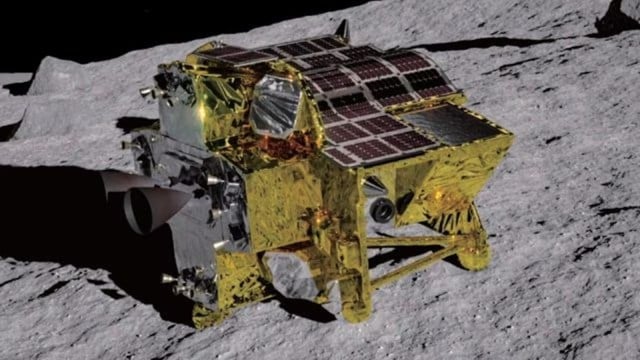Japan achieved a significant milestone on Saturday as it became the fifth country to successfully land a spacecraft on the moon. However, the Japan Aerospace Exploration Agency (JAXA) reported that the Smart Lander for Investigating Moon (SLIM) was not generating solar power during its mission. The primary goal of the mission was to demonstrate “precision” landing technology and rejuvenate Japan’s space program, which has faced setbacks in recent times.
At around 12:20 a.m. (1520 GMT Friday), SLIM touched down on the moon’s surface and re-established communication with Earth. Unfortunately, the spacecraft’s solar panels were unable to generate electricity, possibly due to incorrect positioning. Hitoshi Kuninaka, the head of JAXA’s research center, explained at a press conference that SLIM was operating solely on its battery, and efforts were focused on transferring its data to Earth.
Despite attempts to conserve power, SLIM’s battery has a limited lifespan of only a few hours. JAXA decided to maintain the current status rather than taking risks, hoping that a change in the sunlight’s angle over the next 30 days would enable the solar panels to regain functionality.
Dubbed the “moon sniper,” SLIM aimed for a precision landing within 100 meters of its target, a significant improvement over the conventional accuracy of several kilometers. JAXA sees this technology as crucial for future exploration of the moon’s hilly poles, which are considered potential sources of oxygen, fuel, and water.
While data suggests SLIM achieved the 100-meter accuracy landing, it will take approximately a month to verify the results. Japan now joins the exclusive club of nations, including the Soviet Union, the United States, China, and India, that have successfully executed soft landings on the moon.
Japan’s growing interest in space is evident in its collaborations with the United States to counter China’s influence. The Japan Aerospace Exploration Agency also plans to send an astronaut to the moon as part of NASA’s Artemis program in the coming years. However, recent setbacks in rocket development, such as the launch failure of the H3 rocket, have caused delays in Japan’s space missions.
Despite challenges, Japan remains committed to space exploration, and SLIM’s mission contributes to the nation’s efforts to play a more prominent role in the evolving landscape of space exploration.
